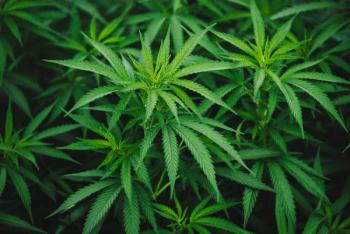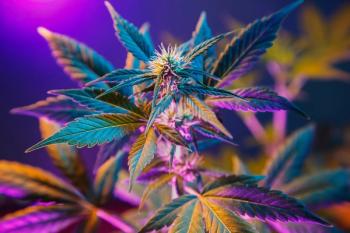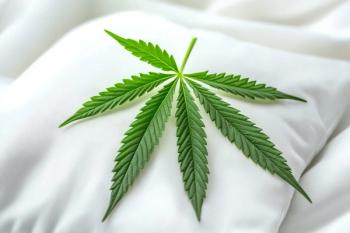
Medical Cannabis Insights, Part III: Medical Cannabis for Pain, Anxiety, ADHD, and More
In this roundtable interview series, we speak to the organizers of the CannMed Medical Practicum—Bonni Goldstein, MD; Dustin Sulak, DO; Kevin Spelman, PhD, MCPP; and Eloise Theisen, NP, AGPCNP-BC— to learn more about them and what attendees can expect from the practicum. Here in part III, they discuss how cannabis is used to treat acute and chronic pain, anxiety, ADHD, and pediatric patients.
Founded in 2016 by
In this roundtable interview series, we speak to each of the organizers to learn more about them and what attends can expect from the practicum. Here in part III, they discuss how cannabis is used to treat acute and chronic pain, anxiety, ADHD, and pediatric patients. Bio information available
How is cannabis used to treat acute and chronic pain?
Bonni Goldstein, MD: Cannabis is not a “one size fits all” medicine. How patients use cannabis is determined by many variables, including severity of condition, individual preference, other medications being used, and response to cannabis. For instance, someone who is an experienced user of tetrahydrocannabinol (THC)-rich cannabis may find relief with inhaled THC. Someone who is new to cannabis may find relief with sublingual or ingested cannabidiol (CBD)-dominant cannabis. Others combine CBD and THC in various ratios to customize their treatment. Additionally, cannabigerol (CBG), cannabidiolic acid (CBDA), tetrahydrocannabinolic acid (THCA), and other secondary cannabinoids can be taken singly or in combination to alleviate pain. Each patient must “trial and error” to see how they respond to find the best cannabinoid regimen for their particular physiology and situation. What works best for someone may not work well for another, even if they struggle with the same diagnosis.
Kevin Spelman, PhD, MCPP: For acute pain, tinctures or inhalation can have a quick effect. For more chronic pain, ingestibles make better sense for their longer duration in effect.
Dustin Sulak, DO: Cannabis is very effective at treating chronic pain and associated symptoms. It can be useful in acute pain, but it also has the potential to intensify acute pain, especially in people who are new to cannabis. Despite this, one study showed that administering THC to trauma patients in the hospital, including those with no prior experience using cannabis, improved their symptoms and decreased their requirements for opioids.
Eloise Theisen, NP, AGPCNP-BC: Treatment with cannabis is best individualized to the patient’s personal needs. There are many factors to consider when developing a treatment plan for acute and/or chronic pain. Some patients may benefit from a variety of cannabinoids and routes of administration when treating pain. Cannabinoids can help reduce inflammation, shift the dysphoria associated with pain, and boost opioid analgesic effects.
How is medical cannabis being used in pediatric patients? Is there clinical evidence for using cannabis to treat anxiety and ADHD?
Bonni Goldstein, MD: Cannabinoid medicines are being used in pediatric patients who suffer with significant illnesses, such as treatment-resistant epilepsy, autism, cancer, gastrointestinal conditions, and genetic syndromes—just to name a few. Since research on the benefits of cannabis in the US is still prohibited due to the Schedule I Controlled Substance classification, scientists and physicians have not been able to study the use of cannabis in any pediatric condition except for epilepsy. However, other countries have allowed research, resulting in preliminary evidence that cannabinoids can help with anxiety and ADHD. One such study from Israel documented that children with autism had improvement in anxiety (as well as improvement in behavior issues and in communication) (1). Another study from Japan found that CBD significantly decreased anxiety in teenagers when compared to placebo (2).
Unfortunately, there are no randomized controlled studies on the use of cannabinoid medicines for ADHD in children, however there are a great many anecdotal reports of benefits by teenagers and adults with this condition who medicate with cannabis. A 2017 trial in adults given either the pharmaceutical Sativex (1:1 CBD:THC sublingual preparation) or a placebo found some improvement in hyperactivity/impulsivity and inattention. Certainly, more studies are warranted for this condition.
Kevin Spelman, PhD, MCPP: There have been positive clinical studies on cannabis use (specifically CBD) in anxiety disorders since the 1980s, so anxiety is a well-known and successfully treated indication. As for ADHD, there are many case studies showing beneficial effects and recent clinical trial that was favorable for ADHD.
Dustin Sulak, DO: Small studies have shown benefit in anxiety and trauma-related disorders with THC, an analog of THC called nabilone, and CBD. There’s even less data for ADHD. Anecdotally, I have seen cannabis help these conditions in hundreds of patients. These are both great examples of conditions cannabis clinicians successfully treat all the time but are lacking peer-reviewed clinical studies.
To find out more about the CannMed Medical Practicum, please visit:
References
- A. Aran, et al. "Brief report: cannabidiol-rich cannabis in children with autism spectrum disorder and severe behavioral problems—a retrospective feasibility study." Journal of Autism and Developmental Disorders 49.3,1284-1288 (2019).
- N. Masataka, "Anxiolytic effects of repeated cannabidiol treatment in teenagers with social anxiety disorders." Frontiers in psychology 10, 2466 (2019).
**CONTINUING EDUCATION CREDITS: This course is provider-approved by the California Board of Registered Nursing, provider number 16845, for 9.5 contact hours.
Newsletter
Unlock the latest breakthroughs in cannabis science—subscribe now to get expert insights, research, and industry updates delivered to your inbox.





